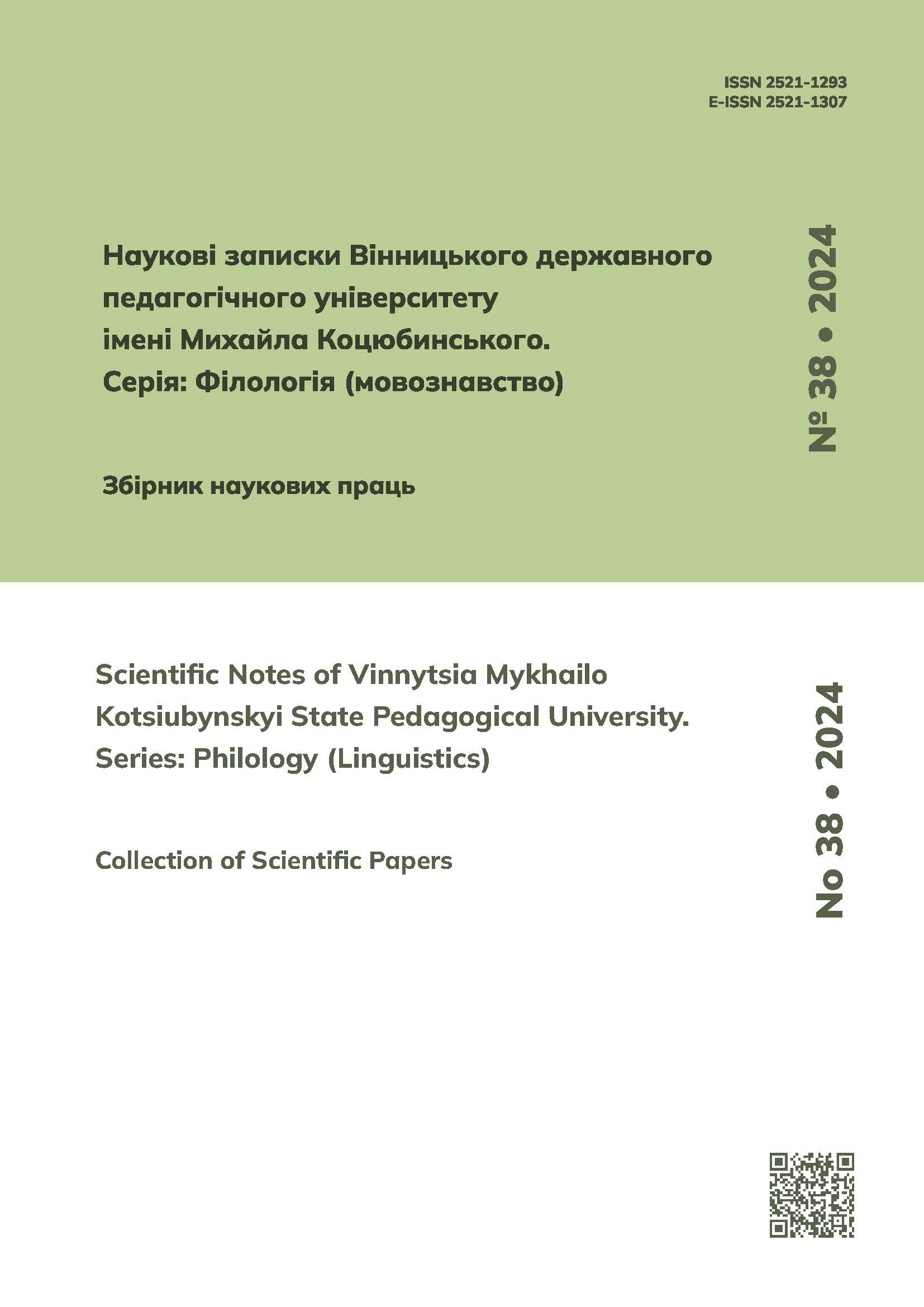Decolonization of toponyms of Vinnytsia: lexical and semantic analysis
https://doi.org/10.31652/2521-1307-2024-38-10Published 2024-08-14
Keywords
- onomastics, onym, toponym, urban name, hodonym
Copyright (c) 2024 Nataliia Pavlykivska

This work is licensed under a Creative Commons Attribution 4.0 International License.
How to Cite
Abstract
A toponym is defined as a common name for any toponymic objects, starting from large geographical names and administrative districts and ending with small internal urban objects (names of streets, squares, settlements, regions, countries, etc.). The main purpose and function of toponyms is to highlight, individualize, and identify named objects among others. Ukrainian onomastics has consistently pointed to the necessity of a systematic study of toponymy, including microtoponymy. The attention of researchers to the microtoponymy of certain regions of Ukraine has increased significantly, and this is represented in the studies of M. Khudash, K. Tsiluiko, E. Cherepanova, D. Buchko, L. Humetska, K. Halas, I. Zheliezniak, S. Verbych, Y. Karpenko, Z. Kupchynska, V. Loboda, J. Pura, M. Torchynskyi, N. Torchynska, Y. Stepanov, and many others. Equally important is the study of urban names, including regional ones. Urban name is the name of an inner-city object that represents the semantic character of the city, records the history of urban structures, their social, ethnic and cultural function. Both Ukrainian and foreign scholars have conducted research in the field of urban names. Among them: D. Buchko, O. Belei, N. Lisniak, N. Liasovets, R. Liashenko, O. Halai, I. Sabodash, Y. Fernos, L. Masenko, P. Chuchka, T. Shmelva, V. Kamianets, M. Blicha, E. Jedrzefko, and others. The purpose of this article is to analyze the lexical and semantic aspects of the hodonyms of Vinnytsia, which appeared as a result of the decolonization of toponyms in 2023. The main research methods are: descriptive, comparative-historical, structural-semantic, and component analysis. Results. The new names immortalize the memory of outstanding figures of culture and art, significant historical episodes, heroes of the all-time liberation struggles, and heroes of the Russian-Ukrainian war. All the analyzed onyms are divided into two groups: derivatives of other proper names, including anthroponyms, microtoponyms, microhydronyms, and onyms of appellative origin. The group of hodonyms derived from anthroponyms includes about 150 names. Among them are the following: 1) hodonyms-names of the heroes of the Russian-Ukrainian war; 2) hodonyms-names of cultural and arts figures, including Ukrainian writers, publicists, journalists, literary scholars, critics, folklorists, composers, singers, actors, artists, architects, and film directors; 3) hodonyms-names of Ukrainian public figures, princes, philanthropists, human rights activists, politicians, military leaders, scientists, educators, and rebels. The group of hodonyms derived from toponyms is presented as follows: 1) derived from oikonyms, including astionym; 2) derived from chorononyms, including sovereignonyms; 3) derived from microtoponyms, microhydronyms. The group of hodonyms derived from appellatives is represented by a small number of names for natural features of the area, the location of an object, etc. Novelty consists in the fact that it is the first lexical and semantic analysis of the hodonyms of Vinnytsia as part of the decolonization of toponyms in 2023. Conclusions. Like other cities in Ukraine, Vinnytsia faced a wave of decolonization of toponyms with Russian and Soviet echoes in 2022-2023. As a result, streets, alleys, and squares were given their historical names. There are personal tributes to the fallen heroes of the Russian-Ukrainian war. The urbanonymicon of Vinnytsia is structured by onymic and appellative derivatives, among which anthroponymic and toponymic homonyms predominate. They reflect the worldview of the city's inhabitants, have important cultural significance, and perform a social, ethnic, and cultural function.
Downloads
References
- Андрощук, К. М. (2022). Урбаноніми Вінниці у контексті декомунізації (друга хвиля перейменувань 2015-2016 рр.). Науковий вісник Міжнародного гуманітарного університету. Серія.: Філологія, № 58, 17-19. https://doi.org/10.32841/2409-1154.2022.58.4 DOI: https://doi.org/10.32841/2409-1154.2022.58.4
- Негер, О. Б. (2018). Українська урбанонімія Закарпаття у XX – на початку XXI ст.: монографія, Ужгород: РІК – У, 200 с.
- Титаренко, А. А. (2015). Урбанонімія Кривого рогу: структура, семантика, функціонування: автореф. дис. на здобуття наук. ступеня кандидата філол. наук:10.02.01. Дніпропетровськ, 20 с.
- Торчинський, М. М. (2007). Денотатно-номінативна структура топонімікону української мови. Науковий вісник Чернівецького університету. Слов'янська філологія : зб. наук. праць. Чернівці : Рута, Вип. 356–359, 375–379. https://elar.khmnu.edu.ua/handle/123456789/1065





